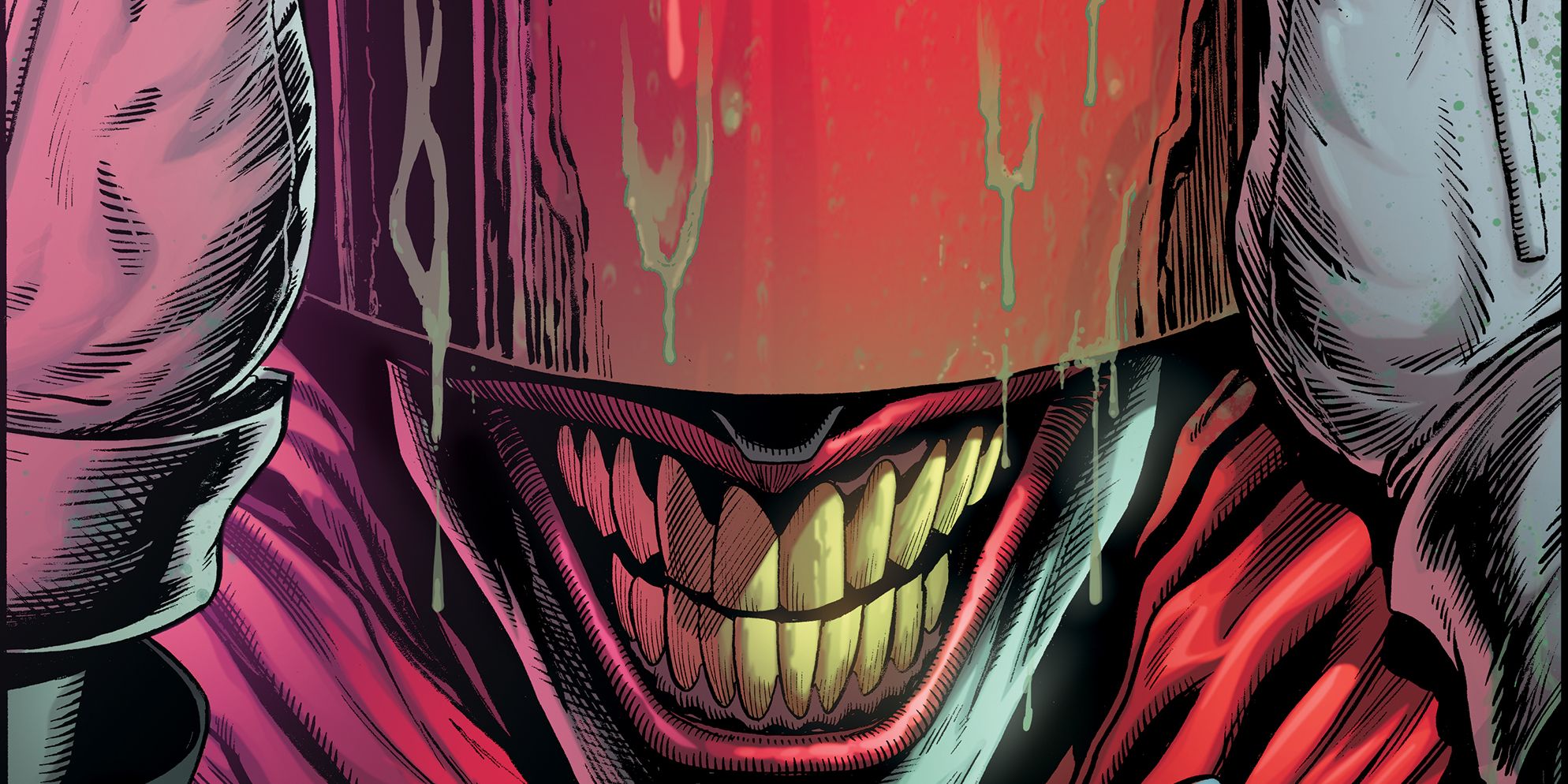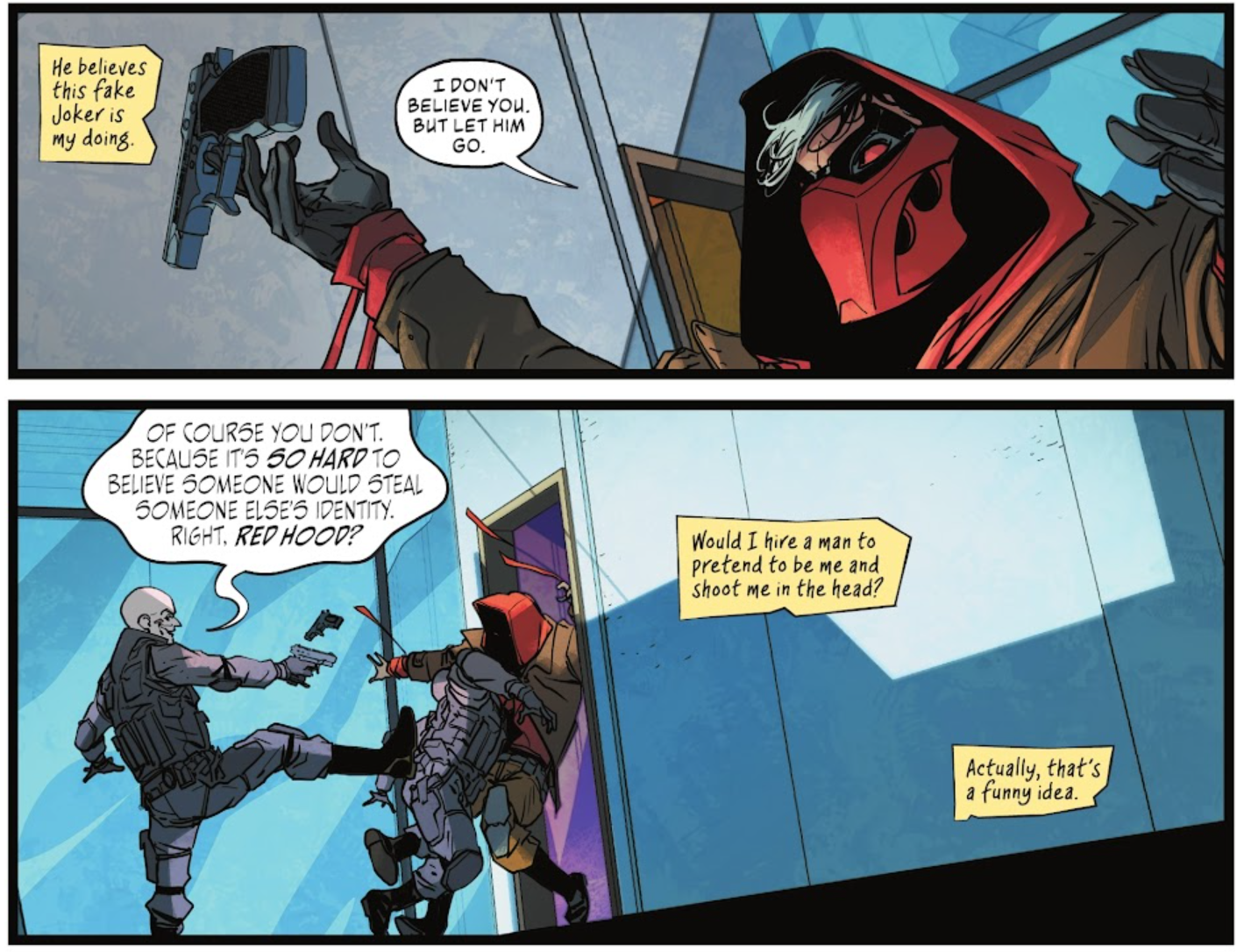Contains Spoilers for Joker: The Man Who Stopped Laughing #4!The Joker’s origins have always been mysterious and contradictory. Now, an offhand comment by the supervillain himself has settled one famous aspect of the origin for good. Uncertainty in his origin however still exists, but for very different reasons than before.
Detective Comics #158 by Bill Finger, Lew Schwarz and Win Mortimer gave the Joker his first, most iconic origin. Here, the man who became the Joker was a criminal who used the identity of The Red Hood to disguise himself before falling into a vat of chemicals while trying to escape Batman. This origin has been retold again and again, with variations throughout, but one thing has almost always remained consistent: the uncertainty surrounding the origin. These origins are often relayed by the Joker himself, and even when they aren’t, writers are keen to leave a level of plausible deniability to maintain the Joker’s mystique. It’s almost certain that the Joker was the Red Hood, but you never know. This is only amplified by DC’s tendency to reboot their universe, or to suggest that multiple conflicting stories can be valid at once.
Now, the Joker’s status as the former Red Hood seems to have been definitively settled by the Joker himself confirming it. In The Joker: The Man Who Stopped Laughing #4, by Matthew Rosenberg and Carmine Di Giandomenico, the Joker is pursued by Jason Todd, who took the Red Hood identity after his death at the Joker’s hands and much later resurrection. Jason questions the Joker about a Joker lookalike who, throughout the series, has been committing crimes in Los Angeles, and the Joker protests his own innocence. Jason doesn’t believe the Joker, but Joker counters, “Because it’s so hard to believe someone would steal someone else’s identity. Right, Red Hood?” This line is essentially the Joker confirming that he really was the Red Hood. How else then would he know about what Jason based his new identity on?
The Joker Confirms His Identity As The Original Red Hood
The prior uncertainly surrounding the Joker even being the Red Hood shows an interesting problem inherent in these stories. Writers want the Joker’s status as the former Red Hood to have some remaining uncertainty, but if it was ever revealed that the Joker wasn’t the Red Hood, then these stories would lose so much of their impact. The uncertainty can feel perfunctory, like it’s something that has to be present in the Joker's history, rather than something that’s crucial to the story. Readers expect the Joker to have an unreliable origin, but the more that writers lean on the Red Hood, the less satisfying any other explanation becomes.
Even with the Red Hood as a confirmed part of the Joker’s origin, there’s still a huge amount of uncertainty around his exact beginnings. It seems likely that the New 52 origin of the Joker, as depicted in Scott Snyder and Greg Capullo’s Batman #21-24, is his canonical origin, in which the Joker assumes the identity of Red Hood One, the ringmaster of a group of Red Hoods made up of blackmailed Gothamites. However, the characterization of the Joker in this story as already manipulative and cruel doesn’t fit with his portrayal In Geoff Johns and Jason Fabok’s Batman: Three Jokers, which takes its inspiration from Batman: The Killing Joke by Alan Moore and Brian Bolland, with Three Jokers portraying him once again as a down on his luck comedian. Despite its explicit connections to New 52 continuity, Three Jokers itself is only dubiously canonical. Perhaps the Joker’s greatest trick in the end is the inability of writers to give him an explicit origin, even when they’re actually trying to.
Joker: The Man Who Stopped Laughing #4 is available now from DC Comics.


